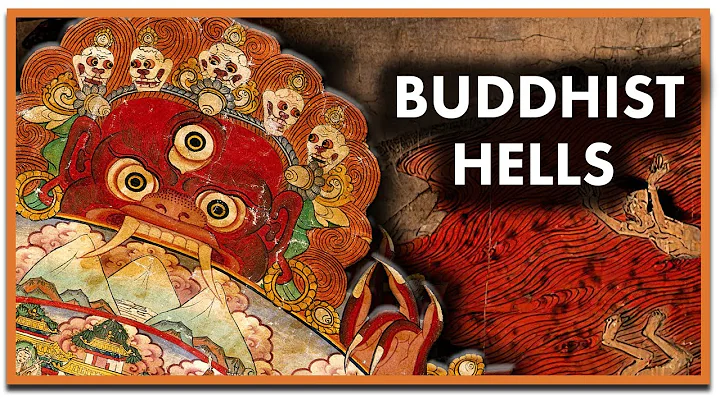Cuiwei Eight Great Wars, Lingguang ranked first. Of course, Lingguang Temple is not just the number one in Cuiwei Mountain, Xishan, Beijing.
The second Lingguang Temple in the eight major places in the western mountain in Beijing is famous for its worship of the tooth relics of Sakyamuni Buddha.

88 major places - Lingguang Temple
Lingguang Temple , was built during the Dali period of the Tang Dynasty (776-779), and was originally named Longquan Temple ; it was rebuilt in the second year of Dading in the Jin Dynasty (1162), and was renamed Jueshan Temple. It was restored in the third year of Yide in the Ming Dynasty (1428), and was rebuilt in the 14th year of Chenghua in the Ming Dynasty (1478), and was renamed Lingguang Temple. In 1900, it was bombarded by the Eight-Nation Alliance and rebuilt in the 12th year of the Republic of China (1923).

Buddha Tooth Relic Pagoda, now worships Buddha Tooth
Mountain Gate Hall, the hall is magnificent, and there are all kinds of good men and women in front of the hall, and they are endless, holding incense and kneeling down to worship.

Copper body gold Sakyamuni Buddha is enshrined in the mountain gate hall. The statue is 4 meters high and weighs 3300 kilograms.

000000000000000000000000000000000000000000000000000000000000000000000000000000000000000000000000000000000000000000000000000000000000000000000000000000000000000000000000000000000000000000000000000000000000000000000000000000000000000000000000000000000000000000000000000000000000000000000000000000000000000000000000000000000000000000000000000000000000000000000000000000000000000000000000000000000000000000000000000000000000000000000000000000000000000000000000000000000000000000000000000000000000000000

0000-eyed Guanyin
The only two remaining relics of the Buddha Tooth Relics in the world are: one is the "Ceylon Buddha Tooth" offered in the Buddha Tooth Temple in Kandi, Sri Lanka, and the other is the " Dharma Tooth Relics " offered in the Buddha Tooth Pagoda of Xishan Lingguang Temple in Beijing, China.
After the Buddha Shakyamuni passed away, he left behind a large number of relics and two spiritual teeth relics, especially these two spiritual teeth relics as treasures passed down from generation to generation. One of them was passed to Ceylon (now Sri Lanka); the other was passed to the then Ukrainian (now Pakistan ), and was transferred from the country to Khotan (now Hotan County, Xinjiang); in the fifth century AD, he was brought back by Southern Dynasties master Faxian , and then went to Nanjing Shanglin Temple . With the change of dynasties, this Buddha tooth relic has been transferred several times to the capital of the Liao Dynasty in the north. In August of the seventh year of Xianyong (1071), the Liao Kingdom Prime Minister 's mother built the zhaoxian pagoda in Lingguang Temple, and this Buddha tooth relic is enshrined in the pagoda.

日本語日本日本日本日本日本日本日本日本日本日本日本日本日本日本日本日本日本日本日本日本日本日本日本日本日本日本日本日本日本日本日本日本日本日本日本日本日本日本日本日本日本日本日本日本日本日本日本日本日本日本日本日本日本日本日本日本日本日本日本日本日本日本日本日本日本日本日本日本日本日本日本日本日本日本日本日本日本日本日本日本日本� The next year , , the , the , the , the , Cheng'en Temple , was entrusted by the abbot of Lingguang Temple , Haishan , and led the monks to rebuild Lingguang Temple. A stone box was found in the rubble on the pagoda. Inside the stone box was a wooden box of agarwood. Each side of the wooden box was written by Shanhui (, the fifth generation, , the famous monk of the Northern Han Dynasty). The book on the top of the box: "The spiritual tooth relics of the Tathagata, the diary of the 23rd April 2 of the seventh year of Tianhui, the book of Shanhui. " Open the wooden , the Dharma offering Buddha's teeth is very at a loss. From Shanhui's inscription on the agarwood box in 963 to the reappearance of Buddha's teeth in the 938th century, to today's 1059th century.

日本語日本語日本日本日本日本日本日本日本日本日本日本日本日本日本日本日本日本日本日本日本日本日本日本日本日本日本日本日本日本日本日本日本日本日本日本日本日本日本日本日本日本日本日本日本日本日本日本日本日本日本日本日本日本日本日本日本日本日本日本日本日本日本日本日本日本日本日本日本日本日本日本日本日本日本日本日本日本日本日本日本日�

日本語本語本本本本本本本本本本本本本本本本本本本本本本本本本本本本本本本本本本本本本本本本本本本本本本本本本本本本本本本本本本本本本本本本本本本本本本本本本本本本本本本本本本本本本本本本本本本本本本本本本本本本本本本本本本本本本本本本本本本本本本本本本本本本本本本本本本本本本本本本本本本本本本本本本本本本本本本本本本本本本本本本In 1955, the Chinese Buddhist Association welcomed the Buddha's tooth relics to worship in the Duobao Pavilion of Guangji Temple. In 1960, a new pagoda was built on the north side of the foundation of Zhaoxian Pagoda to worship Buddha's tooth relics.On June 25, 1964, the Chinese Buddhist Association held a grand ceremony here to invite the Buddha's tooth relic to enter the pagoda and consecrate the newly built " Buddha's tooth relic pagoda ".
"The newly built Buddha Tooth Relics Tower is 51 meters high, the tower is orange-yellow, and the base is built with white marble tower base, surrounded by lotus stone base and jade carvings. There are inlaid stone doors, stone pillars, and stone windows in the middle, the upper part is an octagonal thirteen-layer dense eaves, the exterior is decorated with green glazed tiles, and the top is a gold-distilled bottle. There are seven-story halls in the tower body. The hall. The bottom floor is a stele room, the surrounding wall is inlaid with stone carved steles and scriptures, and there is a stone staircase to reach the Buddhist temple outside. The hall is equipped with a Vajra seat and a colorful painting screen. The seven-treasure golden pagoda is enshrined with Buddha teeth relics. The roof of the hall is decorated with a red-bottomed golden dragon caisson, which is magnificent. The five layers treasure various scriptures and magical instruments. "
Buddha teeth relics are sacred objects in the hearts of Chinese Buddhists and also in the hearts of all Buddhists in the world.

Buddha Tooth Relic Tower
There is a veranda in the courtyard, and when you walk over it is Goldfish pond . In the 16th year of Qianlong's reign (1751), the spring water was stored here to build a pond and stock goldfish.

Yuchiyuan
A small and exquisite white marble bridge is built in the pool, connecting Shuixin Pavilion , there is a couplet: The pine wind and lotus moon answer the spring, and the bluestone white clouds are the pillow screen. Not only are there many tourists and many believers here, but monks from all over the world are also common. Sitting here for a nap, reading and reading scriptures, and watching fish on the railings is a unique feeling.

Goldfish pond
Go west Reclining Buddha Hall , enshrining " Yong'an statue of Sakyamuni Tathagata ", presented by Japanese Buddhist group Zhenru Garden. It is a statue of Nirvana reclining Buddha carved by Ito Machihara himself.
" Record of the Western Regions of the Tang Dynasty " records that the Buddha lay north between two trees and was about to die. At this time, people were very sad. In order to comfort everyone, the Buddha said that he did not go far, he leaned down with his right hand and elbow on the ground. This is the image of the reclining Buddha that everyone knows later. This reclining Buddha is different from other places. It should take the appearance of the Buddha when he was young and enlightened. The entire reclining Buddha highlights the Buddha's youthful wisdom and vitality, and expresses the eternal nature of Buddhist enlightenment.

In the reclining Buddha Hall, "Satan statue of Sakyamuni Tathagata in Eternal Abbott",
Guanyin Hall , the door of the hall is suspended " Awakening Sea and Climbing the Round ", external connection: accumulate good deeds and receive blessings, and be determined to keep one's mind and keep one's mind in line with the Tao. Inside the line: pray in thousands of places, respond to it, and always serve as a boat to cross the people in the sea of suffering.

Guanyin Hall
Guanyin Hall worships Thousand-handed Thousand-eyed Buddha .

Guanyin Hall enshrines the "Thousand-handed Thousand-Eyed Buddha"
Two  00-year-old elm tree 2. Under the autumn light, the branches and leaves are gorgeous.
00-year-old elm tree 2. Under the autumn light, the branches and leaves are gorgeous.

号用
There are two stone tablets in the courtyard: "The Memorial of the Chongxing Lingguang Temple" on the east side, and "The Memorial of the Reconstruction of the Lingguang Temple" on the west side, which records the deeds of Lingguang Temple being completed under the leadership of the Grand Monk of Sheng'an in the 12th year of the Republic of China (1923).

Guanyin Hall and stone tablet
On the north side of the inner tower of the courtyard, there are abbot's room, a living room, a five-guard hall, etc.
climbed up to the second-level platform. In 2001, a blue-white stone " Heart Sutra Wall " was built. The " Prajna Paramita Heart Sutra " written by Mr. Zhao Puchu was respectfully published on the sutra wall. Another layer of Arhat Wall was built in 2004, and the sculpture Five Hundred Arhat Picture . Under the wall of the Arhat, there is , , given by Sri Lanka.
Lingguang Temple architecture is not like ordinary temples, which are symmetrically arranged by mountain gate, Tianwang Hall, main hall, etc. The years have changed. Lingguang Temple now has only three courtyards: "Dafo Courtyard", "Yuchi Courtyard" and " Pagoda Courtyard ". Now it is centered on the pagoda, and the newly built Buddha Tooth Relic Pagoda and the Liao Dynasty Zhaoxian Pagoda are places where Buddhist monks around the world worship it.

Buddha Tooth Relic Tower
Finally, let’s talk about the magnificent three-story antique building next to it, the newly built Liuxi Mountain House .

Liuxi Mountain House
The owner of Liuxi Mountain House Tian Shufan (1885-1966), whose courtesy name was Jieqing, was named Danyuan Laoren in his later years. He was from Tianjia Village, Huangjia Town, Leling County, Shandong Province. He was engaged in business in Beijing for three generations. Tian Shufan was smart and studious when he was young. In 1905, he was admitted to the Imperial College Hall Translation Museum. He graduated in 1910 and was awarded a juren. He was assigned to work in the Foreign Affairs Office as a seventh-rank Beijing official. In 1912, the Ministry of Foreign Affairs was reorganized into . The Ministry of Foreign Affairs was , and he served as director, signing officer, section chief and other positions. In 1927, he resigned from his post, engaged in business and also operated real estate. The former residence of Liuxi Mountain House was the villa of the Manchu Jinshi Tielin . The first poet of Manchu Baoting (1840-1890, the name is Zhupo , the nickname is Yuzhai, the official residence of Manchurian Lanqi, Prince Zheng Xian Jierhalang eighth generation grandson, author of "Ouzhai Poetry Grass") in his later years, he also lived in Tielin Villa. In 1933, Tian Shufan lived in seclusion in Eight Great Places, bought this villa, changed its name to Liuxi Mountain House, and wrote "A Record of Famous Scenic Spots in the West" .
I visit Xishan , and often read Tianshufan "Stories of Famous Scenic Sites in the West" quotes poems, and compares them with the scenery, which adds your love for the scenery in the West.







![[English] Who Am I - Lecture 1 - Ven. Guan Cheng - DayDayNews](https://i.ytimg.com/vi/KU0fUs2It5o/hq720.jpg?sqp=-oaymwEcCNAFEJQDSFXyq4qpAw4IARUAAIhCGAFwAcABBg==&rs=AOn4CLDFpQUN_QwRfC7bmP4sUadq-RcYdg)
![A Moving Masterpiece 清明上河图 [English narration] - DayDayNews](https://i.ytimg.com/vi/kxff-4GktOI/hqdefault.jpg?sqp=-oaymwEcCOADEI4CSFXyq4qpAw4IARUAAIhCGAFwAcABBg==&rs=AOn4CLBtHGLeUpJNCYDJYnZTuISQ1N5Vag)


